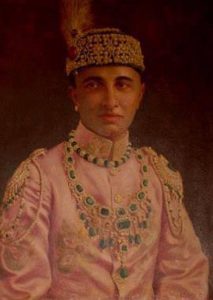After nearly five decades of legal wrangling, 16 descendants of a former Indian royal will receive their share of his estate, worth hundreds of millions of dollars.
The 49-year family saga came to a close last week when a district court in the northern city of Rampur issued the final decision on the division of assets worth 26.5 billion rupees ($350 million) among the heirs of Nawab Syed Raza Ali Khan.

He ruled the erstwhile princely state of Rampur, now part of Uttar Pradesh state in northern India.
The estate includes mansions such as the 220-room Khasbagh Palace and the surrounding 140 hectares of land; gem-encrusted guns, jewellery, a fleet of vintage cars, vast orchards and a private railway station.
Kazim Ali Khan, a grandson of the nawab, said he and the other claimants were overjoyed.

“This was an exhausting process … all my life I fought for my rights. I was seven years old when the legal battle started. I am happy with the verdict,” he told.
Rampur came into existence in 1774. After India’s independence from British rule in 1947, Khan was among the first to join the Indian dominion on the condition his properties would be inherited by his family.
He died in 1966 at the age of 57, and was survived by three wives, three sons and six daughters.
But in 1972, Murtaza’s younger brother, Zulfikar Ali Khan, and other siblings challenged the inheritance tradition and demanded a share in the royal assets under Sharia.
“He had three wives, three sons and six daughters, and the properties should be distributed among them and their children.”
Mr Khan said that in accordance with Sharia, each male heir would receive twice the share of each female one.
Under India’s secular constitution, Muslims and other religious minorities are allowed to follow religious texts and traditions in matters of marriage, divorce and succession.
After the case crawled through local courts for decades, the claimants moved the Supreme Court, which ruled in their favour in 2019.


